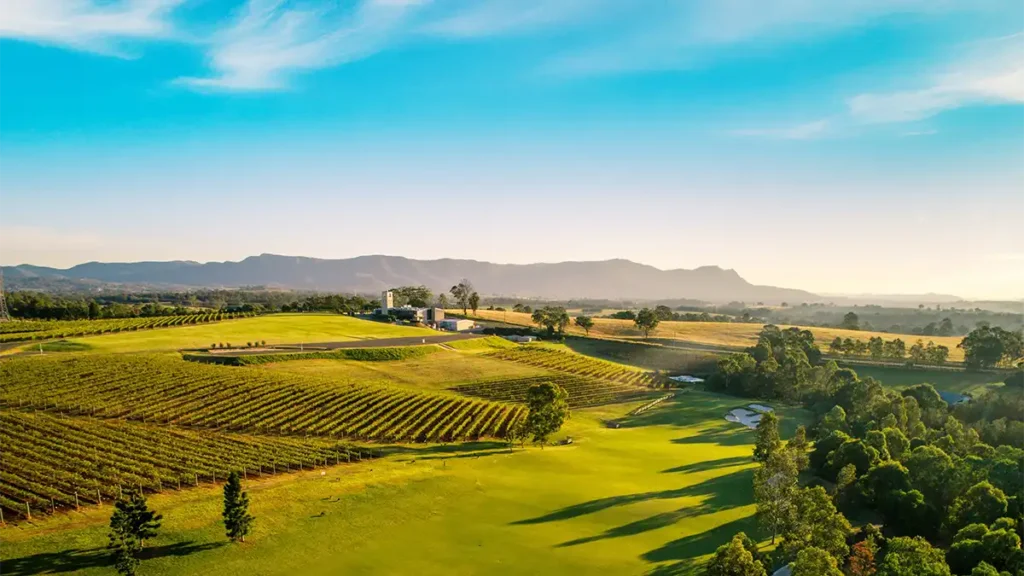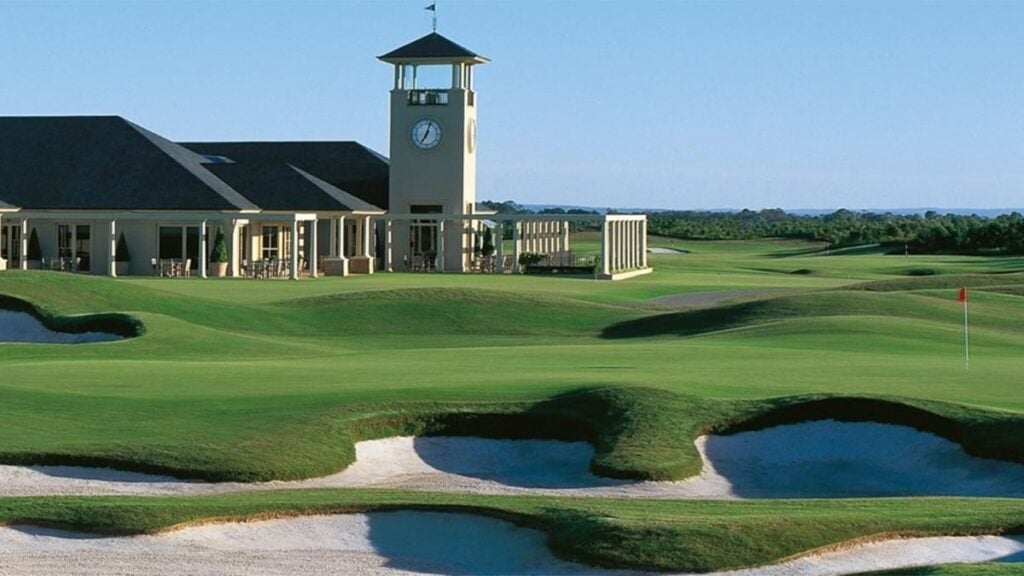[PHOTO: Carnarvon Golf Club/inset Lynda Voltz]
In 2014, Lucas Herbert’s parents drove 11 hours through the night from Melbourne to Sydney so he could tee up in Australian Open qualifying at the humble Carnarvon Golf Club in Sydney’s west. He birdied the last hole for a 67 and, as an amateur, finished T-23 at that Open. It helped launch his career.
RELATED: Moore Park GC fighting to remain 18 holes
Nearly 11 years later, Carnarvon Golf Club is facing the axe.
The beloved Carnarvon is located at Lidcombe, less than 30 minutes from Sydney’s CBD. It is among the two most-used sporting facilities in Auburn/Lidcombe area. Carnarvon is the subject of a state government plan to convert the golf course into a cemetery. The public consultation was scheduled to be put to residents today, months after the organisation responsible for running government-owned cemeteries, Metropolitan Memorial Parks (MMP), said Carnarvon was its preferred location for a “modern memorial park”. The government already owns Carnarvon Golf Club and it sits on the western side of Rookwood cemetery.
Local Labor MP Lynda Voltz says the idea is out-of-bounds. It’s also reignited the debate over publicly accessible golf given Moore Park Golf Club continues to fight to save its fairways from being cut to nine holes.
Ms Voltz hit out at the state government’s plan to strip the community of vital green space and sporting facilities.
“To look at any golfing facility and other sporting facilities as just land that they can make alternative plans for… this is the sixth golf course that we’ve seen under attack in Sydney, and it won’t be the last, but the fact is Carnarvon is our busiest sporting precinct,” Ms Voltz told Australian Golf Digest when contacted today. “Between Carnarvon and the soccer fields at Coleman Park, they are full all the time. Every single day of the week, it’s packed with cars. There’s 2,000 members, there’s a waiting list. There are 1,500 booked rounds a week, and then there’s walk-ins on top of it.”
Ms Voltz argued that Carnarvon is not an elite private club, rather an affordable club that costs a modest $49 for 18 holes and is predominantly enjoyed by working-class golfers, both men and women.
“You’re talking about working class people here [who enjoy] this cheap, public golf course; anyone can go,” Ms Voltz said. “Golf [is a game] you can play from a young age. We’ve got golfers who come down… and one of them is 99 [years old] and still turns up three times a week to play golf.”
As the Daily Telegraph reported on Monday, Ms Voltz had previously cautioned the state government against turning Carnarvon into a cemetery and has found support from fellow state Labor MP Julie Finn, the Member for Granville, and Federal Education Minister Jason Clare, the Member for Blaxland.
Ms Voltz told Australian Golf Digest there are other options than Carnarvon Golf Club.
“We’ve got this extra land up at the Lidcombe TAFE and Cumberland Hospital site’s been sitting empty for four years,” she said. “There’s land on the other site; Hudson Park [in Strathfield] was indeed identified back in 2012 as being the extension for the cemetery. I don’t know why that hasn’t been looked at. That was certainly earmarked for it, so there are other sites. But the other question is, why does our local community have to bury everyone in Sydney, and why does our local community have to pay the full cost of it?”
Voltz said she wants the plan scrapped.
“Well, I’d like to see the government not do this. Obviously, there’s Varroville Cemetery [Macarthur Memorial Park near Campbelltown], which is 32 minutes down the road from the International Airport, or 40 minutes from Blacktown, that is sitting there, nearly empty,” she said. “It’s a cemetery that should be the priority if that’s where people need space. I have offered to talk to government about other sites in the electorate and how they can be utilised for this.”
A petition that has almost 5,000 signatures is available online and states that “[Cumberland] Council is encouraging all residents to stand together in opposition to the proposed reclassification of local open spaces.” It also says that, “Our parks are not vacant land – they are vital community assets that support health, connection, sport and biodiversity.”



